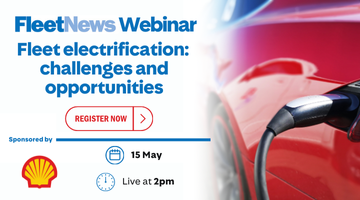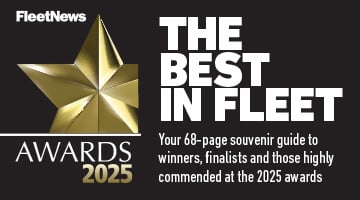To encourage cost-effective, not to mention safe, driving within a company fleet, many employers are finding value in good old fashioned bribes, otherwise known as rewards.
The promise of a cash bonus for drivers that prove themselves to be ‘safe’, for instance, may give some the necessary nudge in the right direction, but the fleet industry is not united when it comes to the concept of reward schemes.
Adrian Baldwin, marketing manager at Masterlease, says: “If the driving is unsatisfactory it tends to be penalised, rather than good driving being rewarded. There seems to be a certain standard of behaviour that is expected.”
For those that do see value in reward, there are a few different ways of going about it.
Reward drivers for choosing green vehicles
Andrew Cope, chief executive at Zenith Vehicle Contracts, says: “We are seeing companies being more open about what the cost of the car is, and then saying to employees ‘if you choose a car that is slightly cheaper because of its CO2 level, we’ll reward you with some of the savings in cash’.”
Yorkshire Building Society rewards its drivers with 15% extra cash to spend on a car if they choose from a range of alternative fuel cars.
On top of this, if the individual does not spend the entire 15% extra on the car, he or she can take the remainder as extra salary.
Similarly, Fitzpatrick Contractors benchmarks cars that it deems to be green. Should any of these vehicles be selected by staff, there is a cash sum paid directly into those drivers’ salaries three months after the car’s delivery.
Geoff Varey, facilities manager at the firm, justifies the expenditure: “Cash is attractive to the driver and also achieves our goal of keeping CO2 levels down.”
Incentives to look after the car
Profit sharing schemes have been set up in the past in an effort to incentivise drivers to look after their vehicles and return them to the leasing company in good condition.
“We have run schemes where companies have asked to offer profit sharing for drivers, so the better the condition of the car –and assuming we make a net gain at the end of the lease – the better for the driver as we cut them in on the saving,” explains Mr Cope.
However, this can be a difficult scheme to run in a fair manner, simply because some cars suffer more from wear and tear than others, and any accidents that have devalued the car may not have been the fault of the employee.
Media firm BSkyB has a reward programme in place for field engineers who keep their vehicles in good order over a 12-month period, and also avoid any road accidents.
Drivers are incentivised, with cash at the end of each quarter, to meet certain standards, which focus on areas such as cleanliness and running condition of the vehicle.
Line managers inspect the vehicles and provided the driver has met the standard – and avoided accidents – the cash is paid into the driver’s salary.
Incentives to take alternative transport
Related to the green issue is an incentive scheme which aims to encourage drivers to leave their company cars at home when they are not essential for business use.
Rewarding drivers with free or discounted bus or train travel if they leave their car at home for a selected period is another incentive that could help a company keep its carbon footprint to a minimum.
Yorkshire Building Society is running such a scheme in September and will enter drivers into a prize draw, with the winners being given a week-long bus pass with which to commute to work each day.
Encourage a low fuel bill
According to on-going research by Professor Michael Browne, professor of logistics at the University of Westminster, companies can make fuel savings of between 15% and 20% if they manage to alter the behaviour of their drivers.
So rewarding drivers that do manage to keep a check of where and when they fill up is a concept that has crossed the minds of many fleet managers.
Christine Gibson, travel co-ordinator for Yorkshire Building Society, says: “We would see value in rewarding drivers that keep their fuel bill down, and we would like to evaluate where drivers are shopping for fuel.”
Yet once again, such a reward scheme could be difficult to run as the cost of fuel varies and this could create a reward scheme that is biased towards drivers in the north, for instance, or in areas where fuel is cheaper.
“Offering incentives to drivers who fill up their tanks in the cheaper stations would make quite a difference to a fleet of 1,000 cars, though there are regional differences that make it tough to operate,” adds Mr Cope.
















Login to comment
Comments
No comments have been made yet.